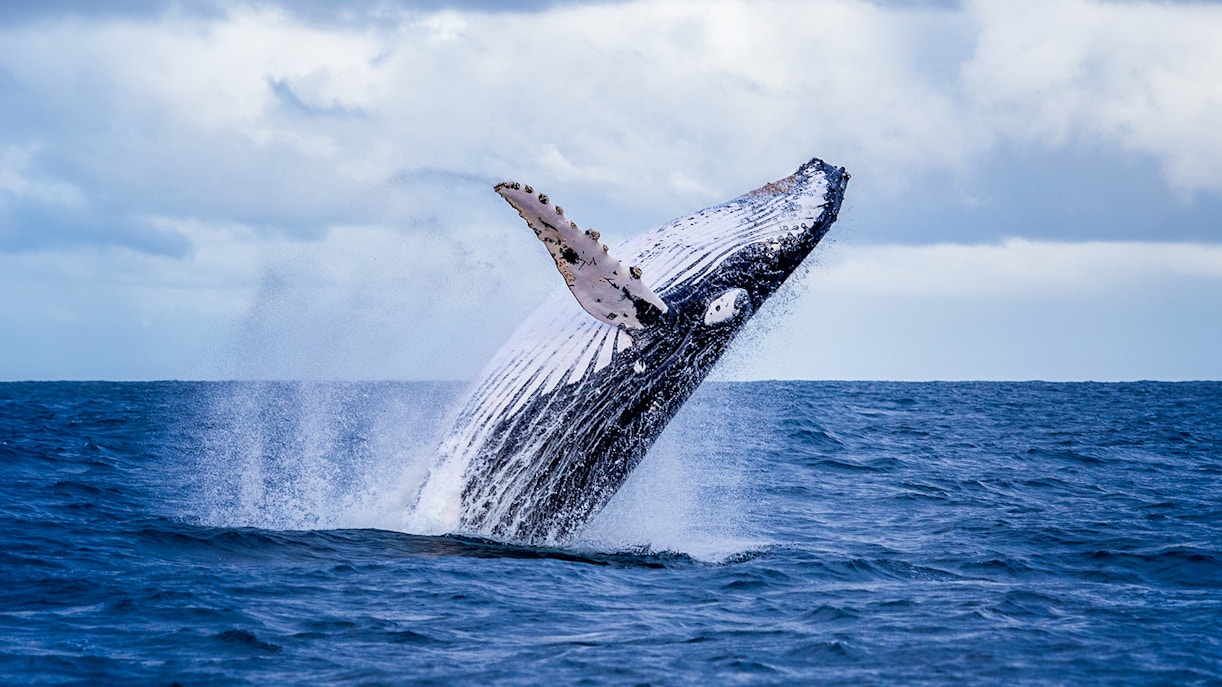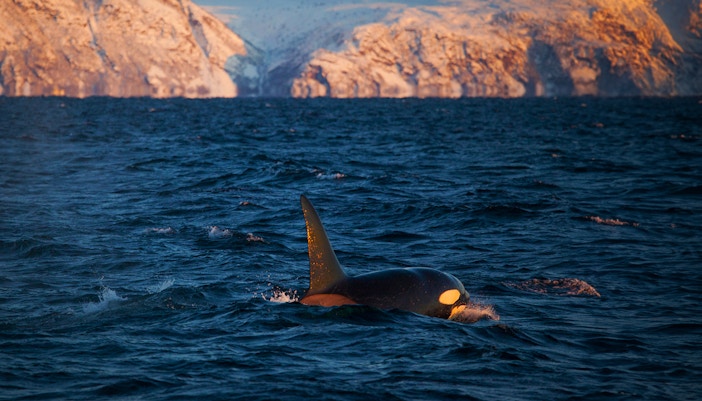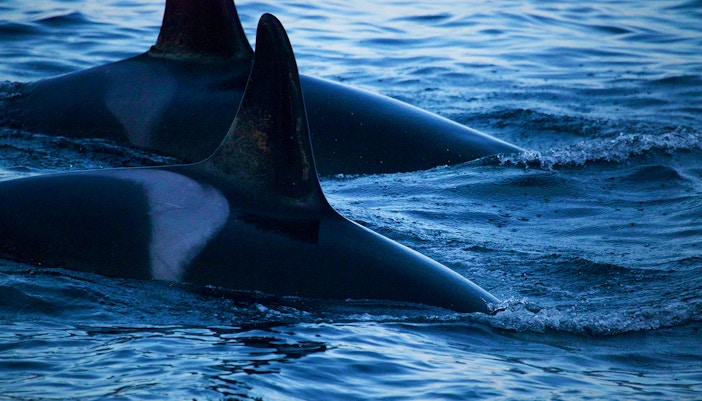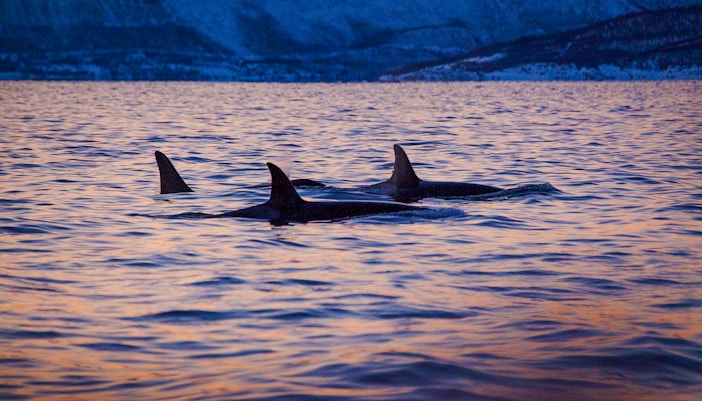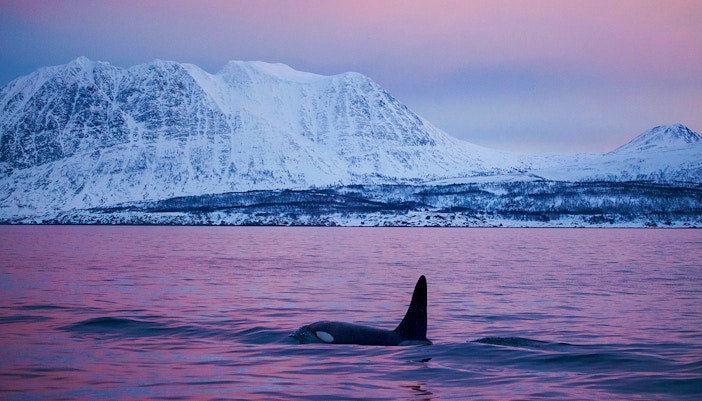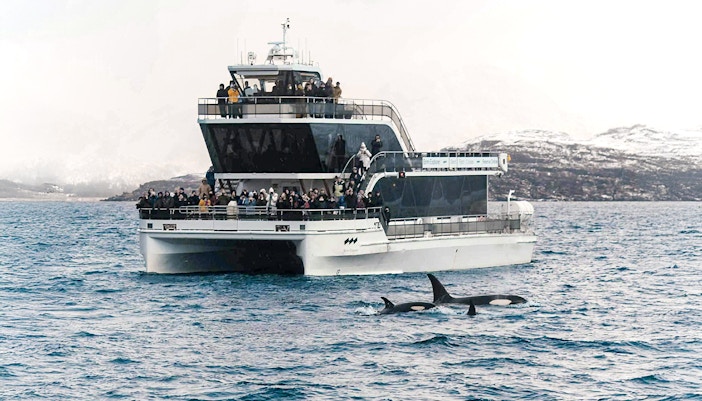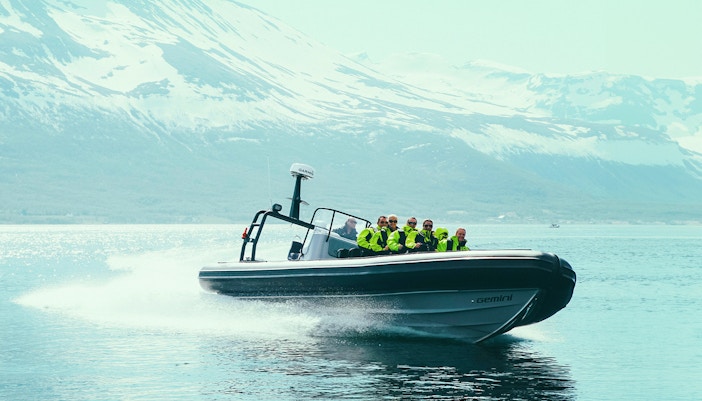The best time for whale watching in Tromso is between November and January when vast schools of migrating herring attract orcas and humpback whales to the region.
During these months, the fjords around Tromso transform into feeding grounds, making it the perfect time for whale spotting, with tours often witnessing large groups of whales feeding and playing in the frigid waters.
